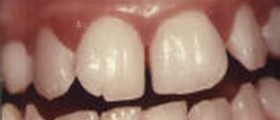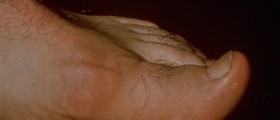
There are three types of this rare blood disease. The classification is done according to the deficient clotting factor. Therefore, hemophilia can be: hemophilia A, hemophilia B and hemophilia C. The most common type of hemophilia is hemophilia A. In this type, the clotting factor VII is insufficient. Deficiency of clotting factor IX causes hemophilia B, while deficiency of clotting factor XI leads to the occurrence of hemophilia C.
Symptoms of hemophilia
Hemophilia is rare blood disorders that can vary in severity; it can be mild, moderate or severe. In the majority of cases, mild hemophilia is detected only after one bruises himself/herself in an accident, or after an operation. Moderate and severe hemophilia have easily noticeable symptoms so they can be detected in earlier stages. The most obvious symptom of hemophilia is bleeding, particularly in the joints.
The most common symptoms of mild hemophilia are pain and irritations in the joints, as well as a feeling of tingling in the joints. The people who suffer from moderate hemophilia may experience severe pain in the joints and pain during the movement of joints. Furthermore, joint tenderness, as well as stiffness in the joints, may occur when moderate hemophilia is in the question. The most common symptoms of severe hemophilia are unexplained nose or gums bleeding, large bruises and blood in urine or stools. Moreover, severe hemophilia may cause tightness in the joints, as well as excessive bleeding from minor cuts.Intracranial hemorrhage and its symptoms
Intracranial hemorrhage is the medical term for the internal bleeding in the brain. When this occurs, there are several symptoms that indicate this severe health condition. The most common warning signs of intracranial hemorrhage are headaches, convulsion and vomiting, as well as vision problems, such as blurred or double vision. Furthermore, the people with this disorder may experience stiffness in the neck, lack of coordination, confusion and speech impediment. Seizures and behavioral changes may also appear as the symptoms of the intracranial hemorrhage.
Treatment of hemophilia
Although there is no cure for hemophilia, it can be controlled by clotting factor replacement therapy. In case of mild hemophilia, the deficient clotting factor is replaced only when necessary. On the other side, in severe hemophilia, the patients should regularly replace the insufficient clotting factor.

















Your thoughts on this
Loading...